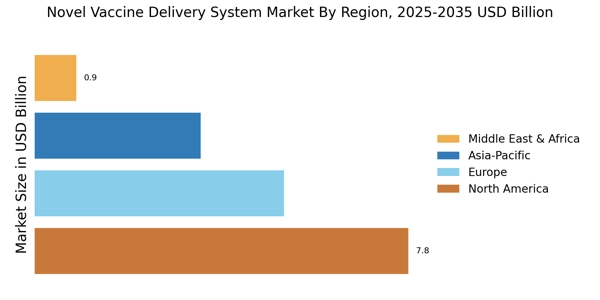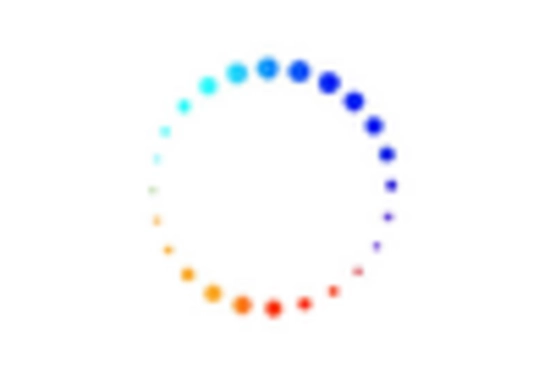Rising Demand for Vaccination
The Novel Vaccine Delivery System Market is witnessing an increase in demand for vaccination, driven by heightened awareness of preventive healthcare. As populations become more health-conscious, the need for effective and accessible vaccination methods is paramount. This trend is further amplified by the growing prevalence of infectious diseases, which necessitates innovative delivery systems that can ensure rapid and efficient immunization. Market data suggests that the demand for vaccines is expected to grow at a CAGR of 8% through 2027, with novel delivery systems playing a critical role in meeting this demand. Enhanced delivery methods, such as intranasal and transdermal systems, are likely to gain traction as they offer improved patient compliance and comfort. Consequently, the expansion of vaccination programs worldwide is anticipated to drive the growth of the Novel Vaccine Delivery System Market.
Regulatory Support and Frameworks
The Novel Vaccine Delivery System Market is bolstered by evolving regulatory frameworks that aim to streamline the approval processes for innovative vaccine delivery methods. Regulatory bodies are increasingly recognizing the importance of novel delivery systems in enhancing immunization strategies. For instance, expedited pathways for the approval of microneedle and other advanced delivery technologies are being established, which could significantly reduce time-to-market for new products. This regulatory support is crucial, as it encourages investment in research and development, thereby fostering innovation. The market is expected to witness a compound annual growth rate (CAGR) of approximately 10% over the next five years, driven by these favorable regulatory conditions. As a result, companies are more likely to invest in novel delivery systems, which could lead to a wider array of options for healthcare providers and patients alike.
Increased Investment in Vaccine Research
The Novel Vaccine Delivery System Market is benefiting from increased investment in vaccine research and development, which is crucial for advancing innovative delivery systems. Governments and private entities are recognizing the importance of funding research initiatives that focus on novel delivery technologies. This influx of capital is expected to accelerate the development of new vaccine formulations and delivery methods, thereby enhancing the overall effectiveness of immunization strategies. Recent reports indicate that global investment in vaccine research has surged, with funding levels reaching over USD 10 billion in recent years. This financial support is likely to foster collaboration between academia and industry, leading to breakthroughs in vaccine delivery systems. As a result, the Novel Vaccine Delivery System Market is poised for substantial growth, driven by the continuous evolution of research and development efforts.
Integration of Digital Health Technologies
The Novel Vaccine Delivery System Market is increasingly integrating digital health technologies, which are transforming the landscape of vaccine administration. Digital platforms that facilitate remote monitoring and data collection are becoming essential in enhancing the efficiency of vaccination campaigns. For instance, mobile applications that remind patients of vaccination schedules and track their immunization history are gaining popularity. This integration not only improves patient engagement but also allows healthcare providers to analyze vaccination trends and outcomes more effectively. The market for digital health solutions in vaccine delivery is projected to grow significantly, with estimates suggesting a potential increase of 15% annually over the next few years. As digital health technologies continue to evolve, they are likely to play a pivotal role in optimizing the Novel Vaccine Delivery System Market, ensuring that vaccines reach the populations that need them most.
Technological Innovations in Vaccine Delivery
The Novel Vaccine Delivery System Market is experiencing a surge in technological innovations that enhance the efficacy and efficiency of vaccine administration. Advanced delivery systems, such as microneedles and nanoparticle-based carriers, are being developed to improve the stability and bioavailability of vaccines. These innovations not only facilitate painless administration but also enable self-administration, which could significantly increase vaccination rates. According to recent estimates, the market for microneedle technology alone is projected to reach USD 1.5 billion by 2026, indicating a robust growth trajectory. Furthermore, the integration of smart technologies, such as temperature monitoring and tracking systems, is likely to enhance the overall reliability of vaccine delivery, thereby fostering trust in vaccination programs. This technological evolution is pivotal in addressing public health challenges and ensuring widespread vaccine accessibility.


















Leave a Comment